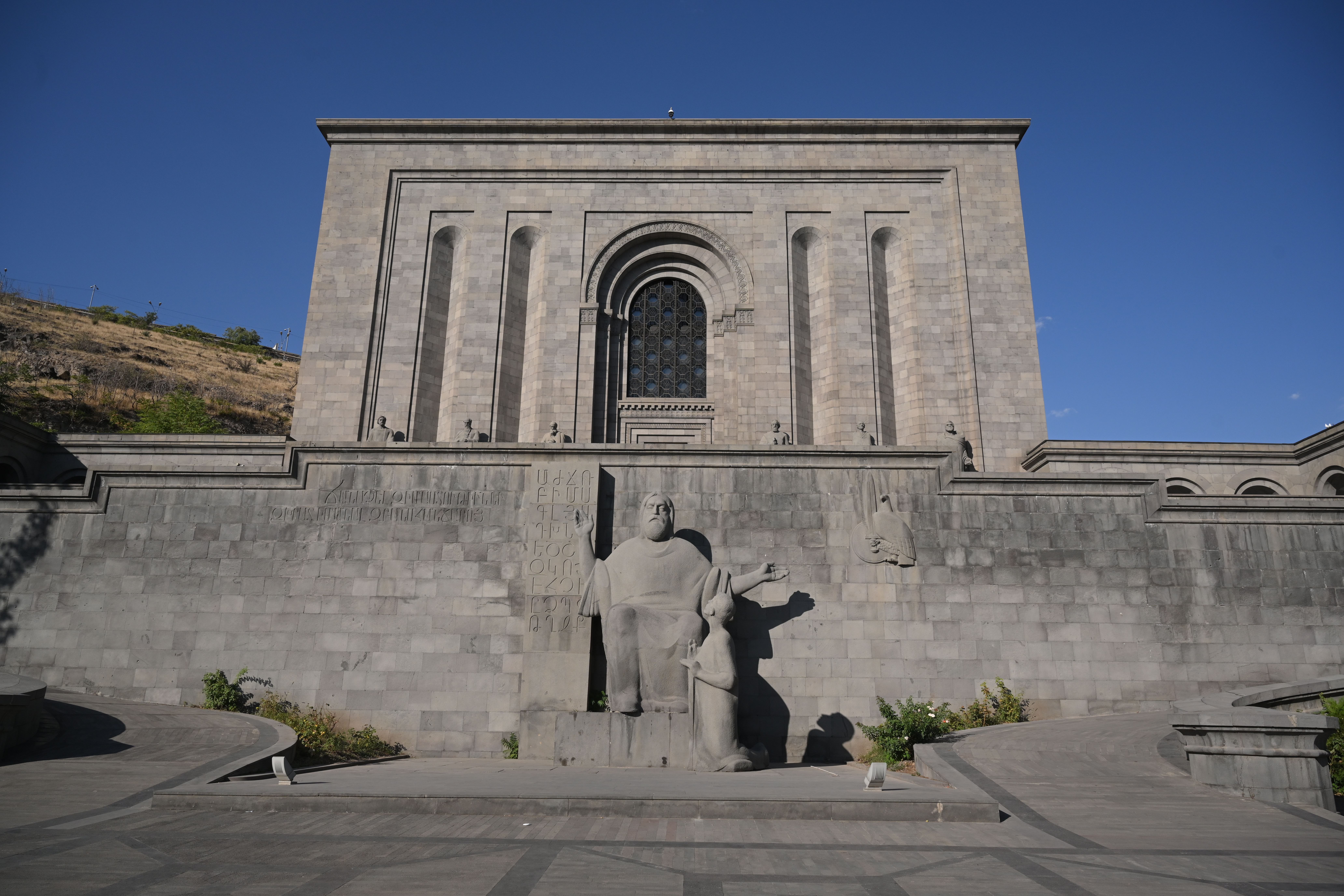Statue of Mesrop Mashtots and his Disciple Koryun

Those approaching the building of the Matenadaran first of all see the statue of Mesrop Mashtots, creator of the Armenian alphabet, founder of the school in Armenian language, first teacher of Armenian, enlightener, and his disciple Koryun. The group of statues, like the entire building, is made of Armenian bluish-gray basalt. The author is a prominent sculptor and painter Ghukas Chubaryan. Behind the monument one sees the 36 letters of the Armenian alphabet. The first sentence written in the Armenian alphabet is engraved on the left wall: “To know the wisdom and instruction, to understand the words of insight.” Next to Mashtots is the statue of his disciple Koryun, kneeling before his teacher. On the right wall there is an eagle with a sword and a shield, the symbols of Armenian statehood.
The Armenian Alphabet

The Armenian alphabet was invented in 405 by Mesrop Mashtots. He is the originator of Armenian national and translated literature, founder of the school in Armenian language and the first teacher of Armenian. He was one of the most educated people of his time and mastered also Syriac, Persian, and Georgian. Mashtots served at the court as a secretary and translator, then devoted himself to military service.
The Building of the Matenadaran

The building of the Matenadaran is one of the unique structures of Yerevan which attracts everyone’s attention with its magnificent location and special architecture. The Matenadaran, a center of Armenian and world written heritage, is one of the mai ․․․
Statues of the six prominent figures of Armenian medieval culture and science.

The statues of prominent figures of Armenian medieval science and culture are placed as part of the rich decoration of the façade of the main building of the Matenadaran:
Toros Roslin, a scribe and painter of the Armenian Cilician school of the second half of the 13th century. Grigor Tatevatsi (Gregory of Tatev), a 14th-century philosopher, ecclesiastical figure, pedagogue, major representative of Armenian theological thought. Anania Shirakatsi (Ananias of Shirak), a 7th-century mathematician, philosopher, astronomer, researcher of calendars and geographer, the founder of exact sciences in Armenia...
Interior and Exterior Design

In the design of the main entrance, the author creatively used the architectural solutions of the exterior design of the gavit (narthex) of the Arakelots (Holy Apostles) Church in Ani. Keeping the same concept, the architect extensively used in the interior design the architectural motifs of medieval Armenian monasteries and churches, thus emphasizing the role of the Matenadaran as an institute for the study of medieval manuscripts...
Fresco “History of the Armenians”

The three-part fresco titled “History of the Armenians” decorates the walls of the main staircase of the Matenadaran. The author is Van Khachatur. The three parts show the most important periods in the history and written culture of the Armenian people. The left part of the fresco depicts the earliest symbols of the formation of Armenia and the Armenian people.
